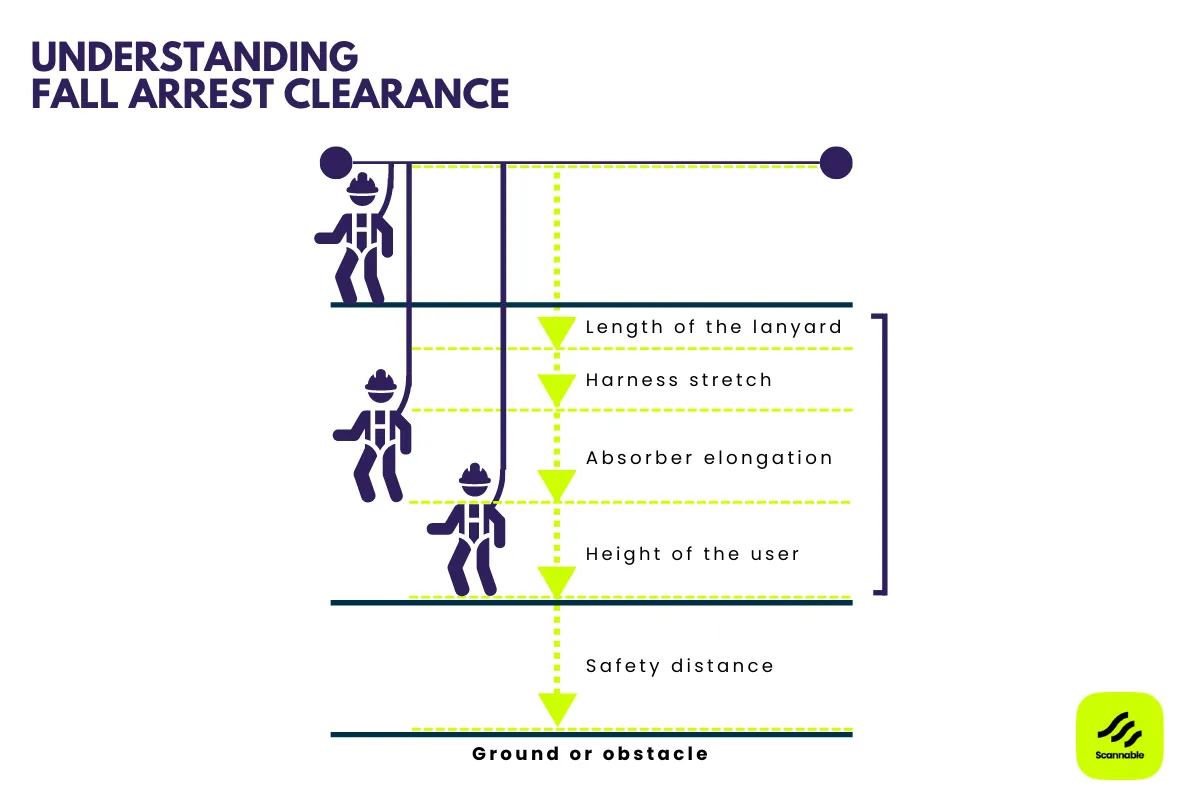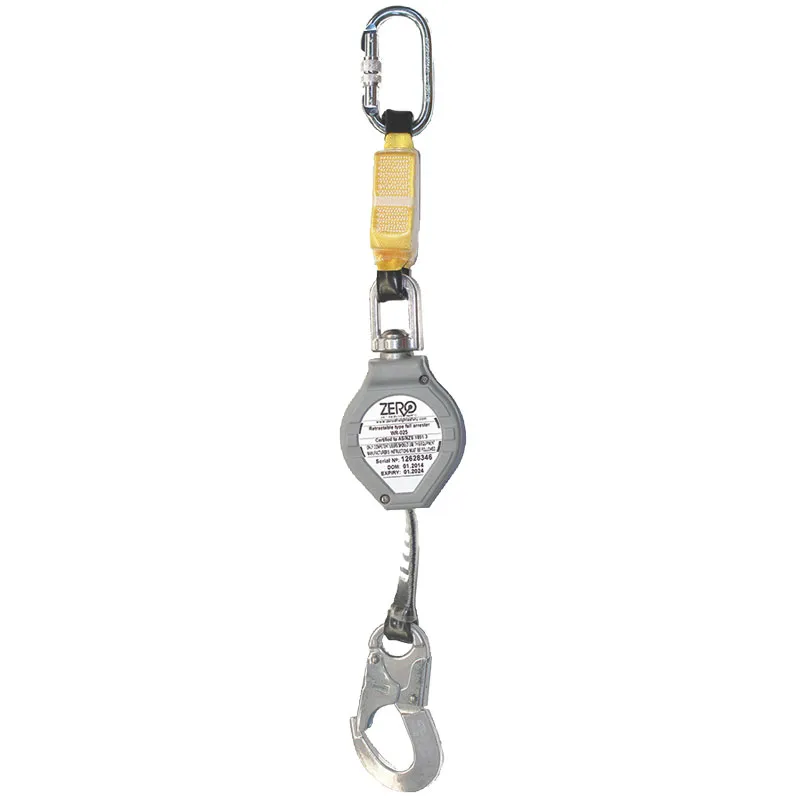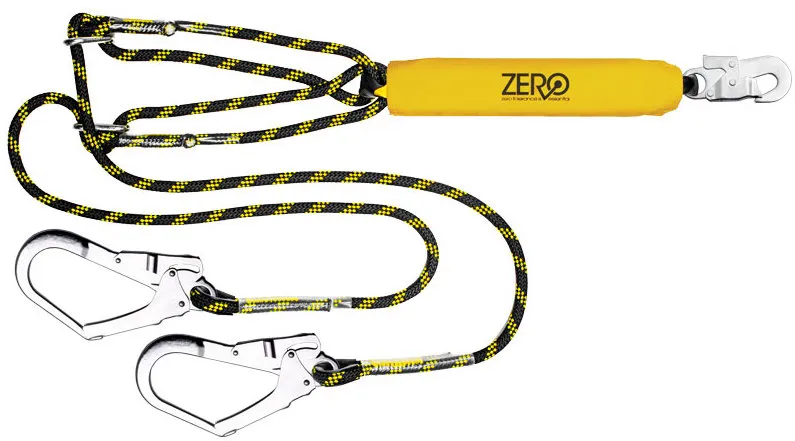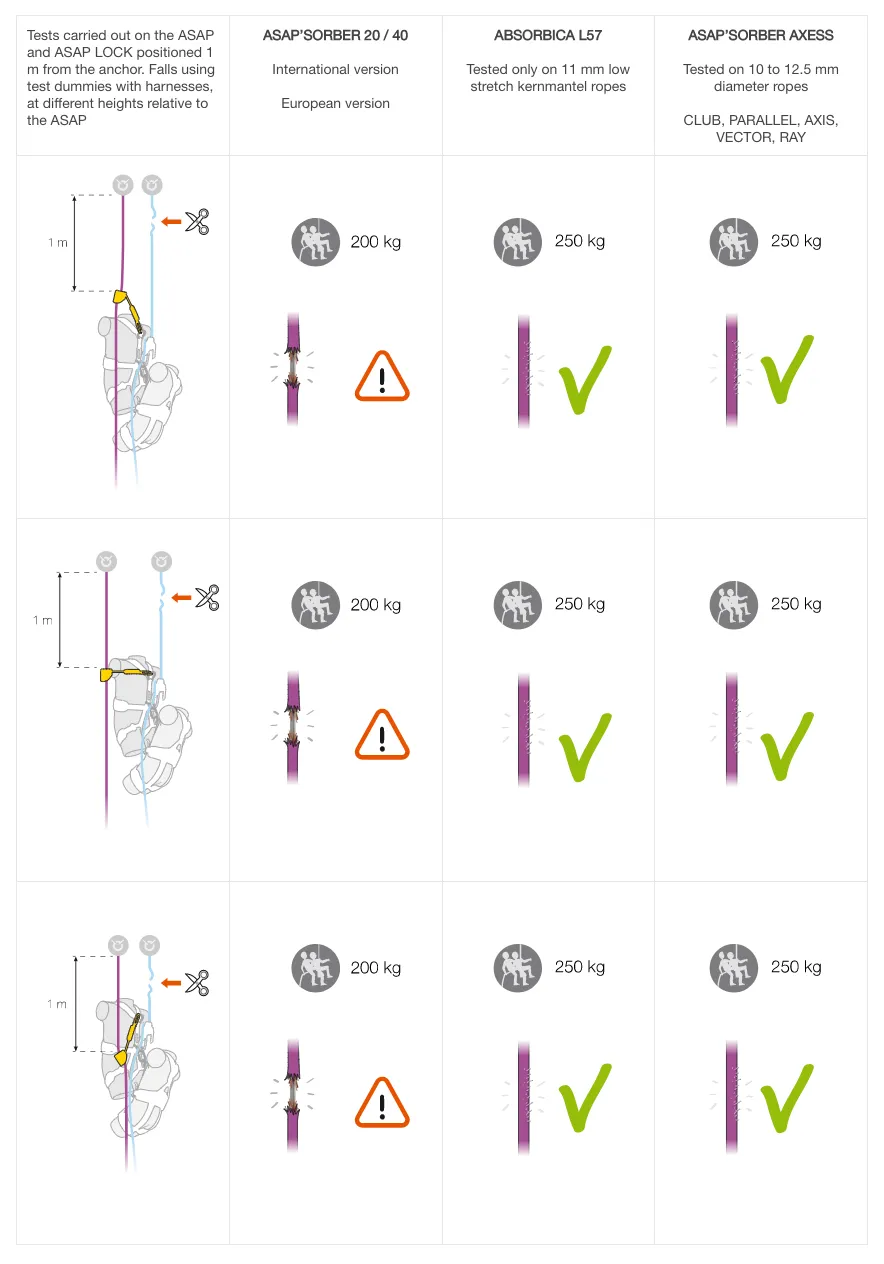.webp)

About the author:
Jess Garland is a former IRATA Level 3 rope tech, she spent 9 years dangling from ropes on a wide variety of sites before hanging up her harness to start a family. She continues to use her practical experience from a keyboard with Scannable.
In a previous blog we looked at the differences between fall restraint, work positioning and fall arrest. In this post, we delve into some of the different fall arrest lanyard options and explain why it is so important to choose appropriately.
Fall arrest is a form of fall protection which involves the safe stopping of a person already falling. It ranks last in the hierarchy of working at height, after fall restraint and work positioning.
Lanyards designed for fall restraint or work positioning that are made from rope, webbing, or cable will not absorb enough energy to keep impact forces below acceptable levels for fall arrest. This means that adding an energy absorber to the system is crucial.
There are many options for lanyards in a fall arrest scenario. The two main categories are energy-absorbing lanyards and self-retracting lanyards.
Energy absorbers (EN 355) work by stretching or tearing internally to dissipate kinetic energy, therefore absorbing the forces of a fall. The maximum force in the system is limited to 6kN. The lanyard (EN 354) is much longer after the energy absorber has deployed, so it is essential to carefully calculate the fall clearance needed.

Energy-absorbing lanyards come in different lengths (the maximum being 2m), different deployment lengths, different materials, and configurations designed for different applications.
Energy-absorbing lanyards work best in scenarios where there is plenty of clearance in the case of a fall. If there is not enough fall clearance on the job, other options must be explored.
.webp)
Self-retracting lanyards (EN 360) have a retractable cable with a built-in brake. The brake engages once a certain speed is reached.
If a free fall occurs, the brake is activated and the user is brought to a stop. There should never be slack in these systems when used correctly.
Self-retracting lanyards are a great alternative to energy absorbers, but the price tag hurts just that little bit more, and inspection for these is not so straightforward. They are a good solution when energy-absorbing lanyards would not arrest a fall in time, like on fixed ladders where ladder fixed cable fall arrest systems are not already in place.

Self-retracting lanyards come in several configurations; from personal units where the breaking mechanism can be attached at either the anchor end or the user’s end, to multi-user systems.
Energy-absorbing lanyards also come in many different configurations, designed specifically for different scenarios. It is important to select an appropriate setup for the type of work you are carrying out.
You can find standard options ranging from 3ft to 6ft in length.
It is important to remember that longer lanyards increase the distance of a fall, and so the force generated during a fall also increases. Because of this, it is best to choose the shortest length of lanyard that meets the needs of the job.
Some lanyards are adjustable, so the length can be altered.
Lanyards are also available in different deployment lengths. The standard length is 6ft. The 12ft or factor 2 fall lanyards are a bit longer and have a higher average arresting force.
For welding, select a lanyard made from a material that won't burn through when slag hits it.
If you are working at the top of a wind turbine where the only anchor point may be at your feet, it would be better to use an extended free fall lanyard that allows a 12ft free fall distance as opposed to the standard 6ft.
A double-legged lanyard could be a good solution to make the transition smooth, but it pays to be mindful that some double-legged lanyards come with their own risks of human error.
If one of the lanyard’s legs is hard clipped to the user’s harness, the energy absorber cannot properly deploy. It is essential that equipment users understand how to use the equipment according to the manufacturer’s specifications.

The short answer is, yes. It does.
An important consideration when selecting an energy-absorbing lanyard is the weight of the user, including all the equipment and tools they are carrying.
The EN 355 standard requires the energy absorber to be tested for a 140kg mass. Some manufacturers will publish clearance height data for 80kg, 100kg, 120kg, and 140kg users in their instruction manuals.
Some energy absorbers have different weight ranges, e.g. 50-100kg, or 90-140kg. An energy absorber designed for 100-140 kg may not deploy properly when a 60kg user falls on it.
A classic example here is the energy absorbers used for a Petzl ASAP. The ASAP is a toothed backup device designed by Petzl for rope access technicians. Because it has teeth it must be used with an energy absorber to protect the forces on both the user and the rope.
Rope stretch should also be taken into account in this sort of scenario.
Petzl outline that their absorbers—the ASAP’SORBER 20 or ASAP’SORBER 40—must not be used for an accompanied descent. For an accompanied descent with two persons on a single energy absorber, the discontinued ABSORBICA L57 or the ASAP’SORBER AXESS must be used as they are capable of stopping up to 250kg without damage to the rope.
Petzl warns “Do not use the ASAP’SORBER 20 or 40 for an accompanied descent: Tests have shown that the ASAP’SORBER 20 and 40 (European and international versions) lack sufficient energy absorption capacity for this usage.”

While energy absorbers are a simple part of the kit, they are an invaluable part of the system. Selecting the appropriate piece of equipment is vital.
If you need to check what standards your equipment meets or read through the manufacturer’s specifications, add it to your kit list in the Scannable app to access the data you need.
.webp)
